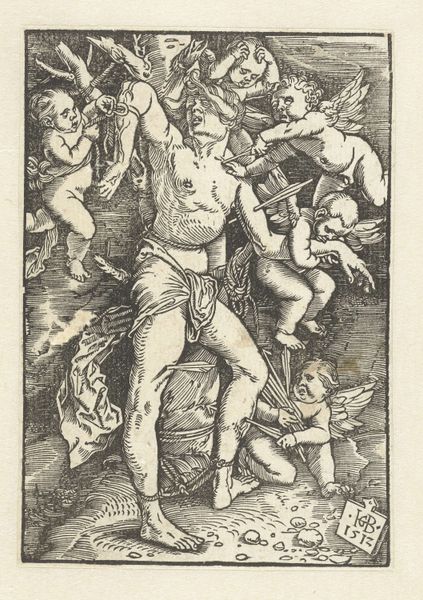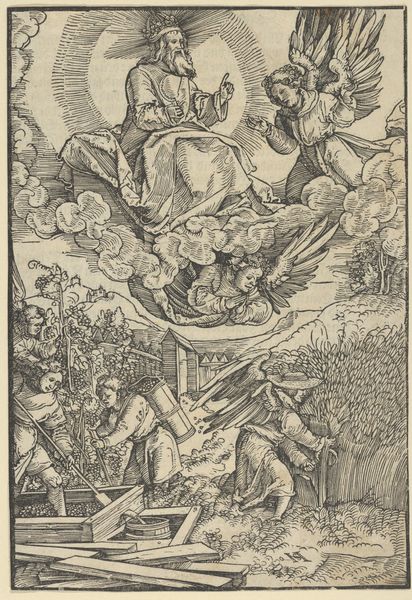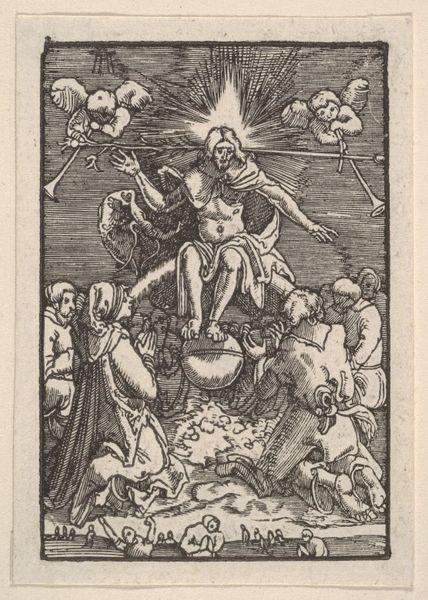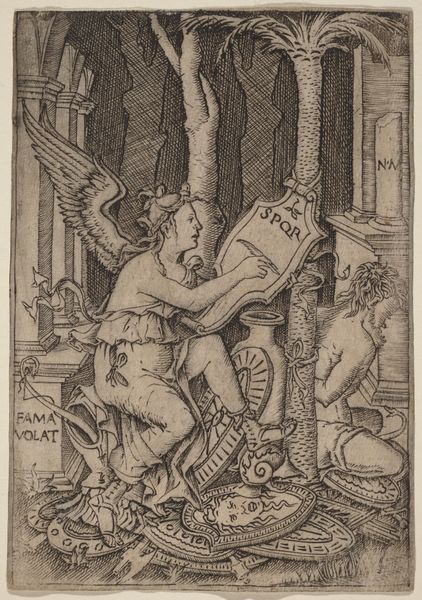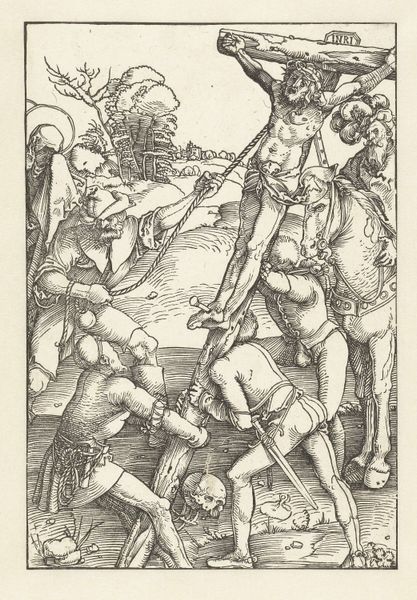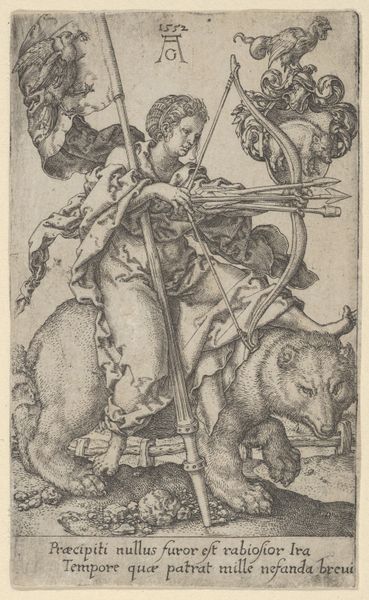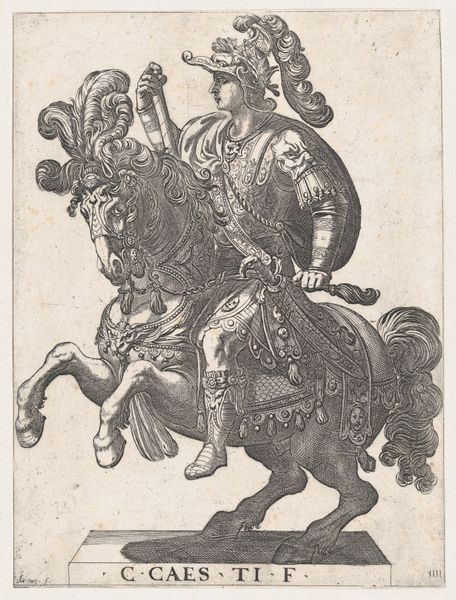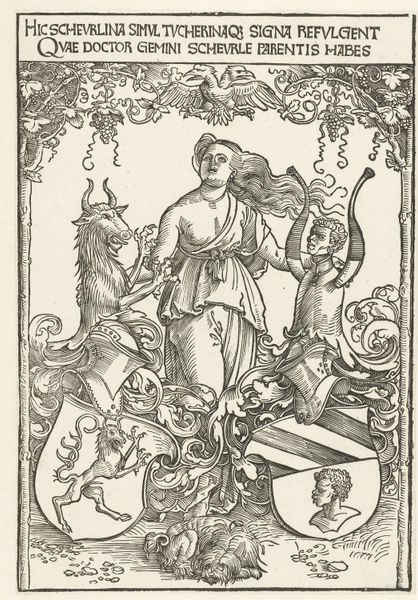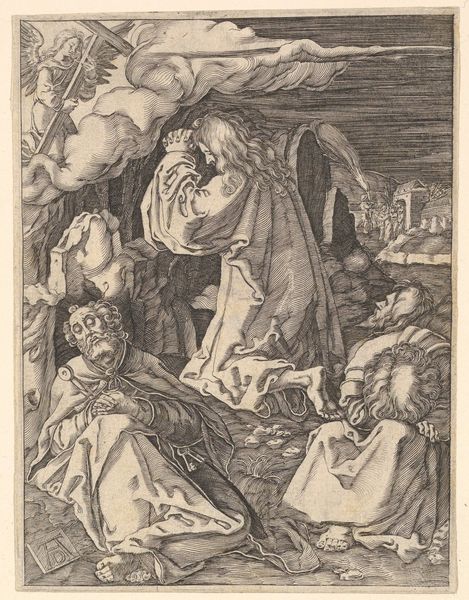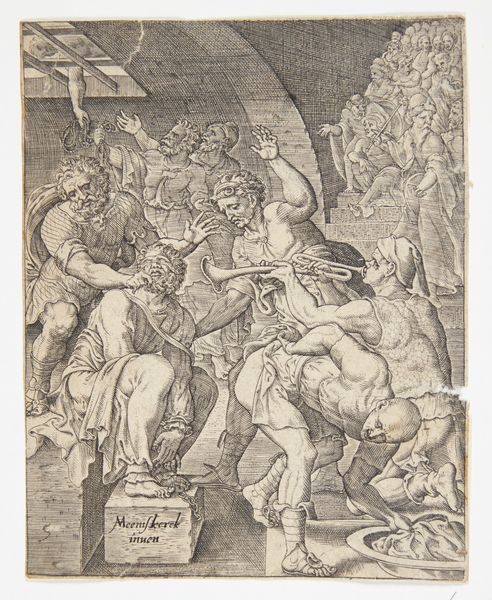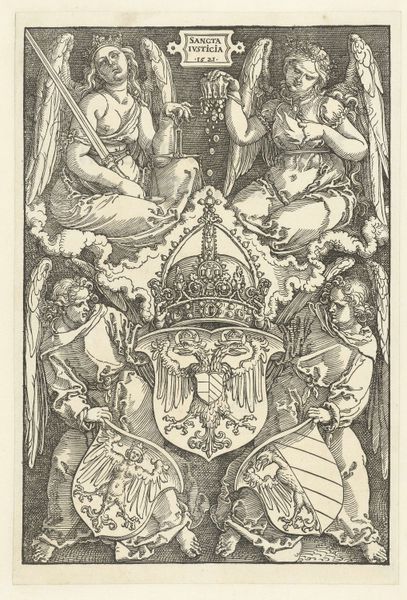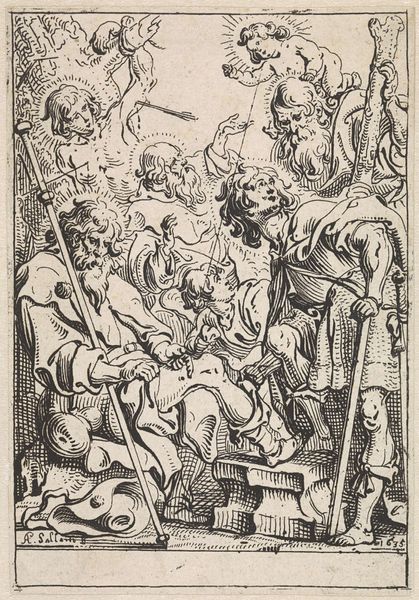
print, woodcut
# print
#
figuration
#
woodcut
#
northern-renaissance
Dimensions: Sheet: 5 1/8 × 3 7/16 in. (13 × 8.7 cm)
Copyright: Public Domain
Curator: This is Hans Baldung’s "St. Mary Magdalen," a woodcut print created sometime between 1507 and 1517. What strikes you about it? Editor: It's incredibly chaotic! A jumble of limbs and textures. You've got the saint, angels, what looks like devils, and all rendered in stark black and white. It's overwhelming to look at! Curator: Baldung certainly packed a lot into this relatively small space. Think about the historical moment here. The Reformation is brewing, and anxieties around the body, especially the female body, are central to theological debates. Baldung presents us with a Magdalen who embodies both spirituality and earthly sensuality. Editor: I’m interested in the materiality of the woodcut. This wasn’t a painting intended for a wealthy patron, but a mass-produced image accessible to a wider audience. We should consider how the medium itself shaped the message, and how it might’ve been disseminated throughout society. What does reproduction afford in early sixteenth-century Europe? Curator: Absolutely, and note how Baldung subverts the idealized images of women common at the time. Magdalen is surrounded by these almost aggressively carnal putti. And that figure beneath her? Could it be a reference to anxieties around female power and witchcraft during that era? We see her struggling to escape its clutches, almost asserting herself against patriarchal oppression. Editor: The textures, too, must be intentional. The angel’s skin is soft, the devil-creature below is hairy and gnarled, her body seems very soft. Baldung knew how to make this medium communicate. We’re dealing with a craft as well as an expressive fine art. Curator: Precisely. And her downward gaze suggests not shame, but perhaps a kind of knowing resignation in a world attempting to define and confine her. It invites the viewer to actively reconsider her role within both the religious and the societal narratives of the time. Editor: I came here just expecting an emotionally striking and interesting woodcut, but I didn't realize how dense the materials were that surround its context. Curator: Baldung presents us with a woman who is multifaceted, defiant, and ultimately, human. It's a powerful and enduring image.
Comments
No comments
Be the first to comment and join the conversation on the ultimate creative platform.
